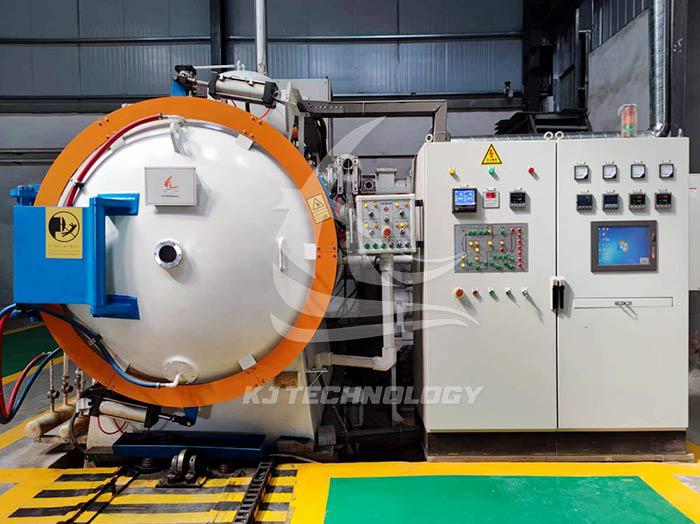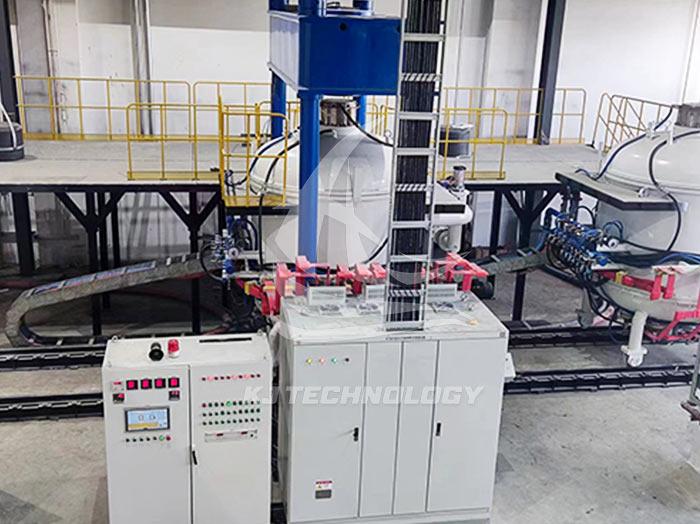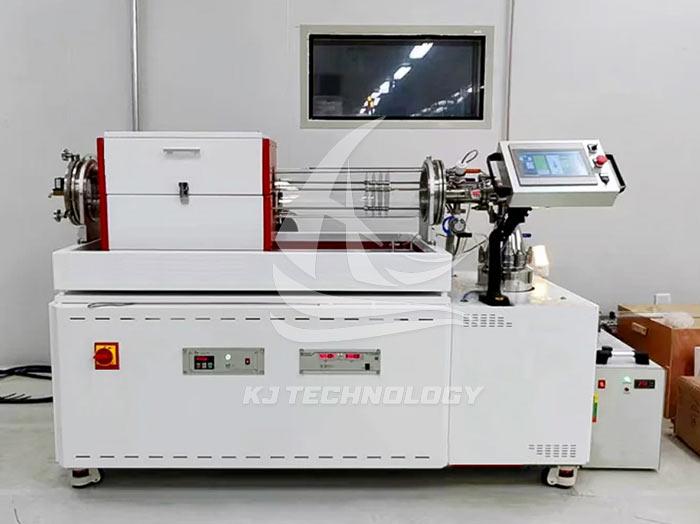Vacuum atmosphere muffle furnace
 09-12-2025 Author: KJ technology
09-12-2025 Author: KJ technology
The vacuum atmosphere muffle furnace is a high-temperature heating equipment that combines vacuum environment control and atmosphere regulation functions, widely used in materials science, metallurgy, chemical engineering, electronics, aerospace and other fields. The following provides a detailed introduction from five aspects: basic structure, core functions, application areas, operational precautions, and key considerations for selection:
1. Basic structure
The core structure of a vacuum atmosphere muffle furnace includes:
Heating tube: High temperature resistant ceramic tubes (such as corundum tubes) or quartz tubes are usually used. The sample is placed inside the tube and heated at high temperatures through heating elements (such as silicon carbon rods and resistance wires) outside the tube. The temperature range is generally from room temperature to 1200 ℃~1800 ℃ (depending on the material).
Vacuum system: equipped with vacuum pumps (such as rotary vane pumps, molecular pumps), can reduce the vacuum degree inside the furnace tube to 10 ⁻ Pa or even higher, used to remove air or volatile gases.
Atmosphere control system: By using gas flow meters, valves, and other components, inert gases (such as nitrogen, argon), reducing gases (such as hydrogen), or mixed gases are introduced into the furnace tube to maintain a specific atmosphere environment.
Temperature control system: using high-precision thermocouples and PID controllers to achieve precise control of heating rate and insulation time, ensuring temperature uniformity (temperature difference can be controlled within ± 5 ℃).
2. Core functional features
Dual control of vacuum and atmosphere: It can not only evacuate to isolate air, but also fill specific gases to create protective or reactive atmospheres, meeting the processing needs of different materials.
High temperature stability: It can stably maintain high temperatures above 1000 ℃, and some models can reach 1800 ℃. It is suitable for high-temperature processes such as ceramic sintering and metal melting.
Sample processing flexibility: The tubular structure is suitable for processing small batches of samples (such as powders, flakes, and wires) and is easy to observe or quickly retrieve.
Safety: Equipped with devices such as over temperature protection and gas leak detection, especially when using flammable and explosive gases (such as hydrogen), it can reduce safety risks.
3. Application Fields
Metal material processing:
Annealing, tempering, solution treatment, and aging treatment: improve the mechanical properties of materials.
Vacuum brazing: achieving high-strength connection of metal components in a vacuum environment.
Powder metallurgy:
Powder sintering, infiltration, alloying: preparation of high-performance metals and composite materials.
Preparation of ceramic materials:
Ceramic sintering and melting: avoid oxidation, improve density and performance.
electronics industry:
Semiconductor device manufacturing (such as transistors, integrated circuits): achieving high purity and oxidation free treatment.
Electronic component packaging: protects components from environmental influences.
New material research and development:
High temperature synthesis and performance characterization: supporting the development of new materials.
Aerospace:
Heat treatment of key materials such as high-temperature alloys and titanium alloys: meet the requirements for extreme environmental use.
Glass manufacturing:
Melting, opening and other processes: avoid oxidation pollution and improve glass quality.
4. Operation precautions
Preparation before the experiment:
Check the equipment: Confirm that the vacuum pump, sealing ring, thermocouple and other components are intact to avoid air leakage or temperature loss.
Sample processing: Ensure that the sample is dry, free of oil stains, and prevent the production of harmful gases or corrosion of the furnace at high temperatures.
Operation in the experiment:
Vacuumization and ventilation: first evacuate to the target pressure, and then introduce the reaction gas; When switching gases, it is necessary to first close the original gas circuit valve to avoid the explosion of mixed gases.
Temperature control: strictly follow the process curve to raise the temperature, avoiding rapid heating that may cause furnace tube cracking or sample splashing.
Safety monitoring: Real time observation of temperature and pressure display, and immediate shutdown upon discovery of abnormalities.
Post experimental processing:
Cooling and sampling: Wait until the furnace temperature drops below 200 ℃ before opening the furnace door to prevent sudden cooling from causing furnace cracking; Power off and wear protective equipment during sampling.
Cleaning and maintenance: Use a soft bristled brush or vacuum cleaner to remove furnace residues and avoid using corrosive cleaning agents; Regularly check the condition of sealing strips and electric heating elements.
5. Key considerations for selection
Temperature range: Select according to material processing requirements (such as below 1200 ℃ for general metal heat treatment and above 1600 ℃ for ceramic sintering).
Vacuum degree and atmosphere type:
For ordinary vacuum requirements, a rotary vane pump system (10 ⁻ ³ Pa) can be selected.
A molecular pump (10 ⁻⁴ Pa) is required for high vacuum demand.
When dealing with flammable and explosive gases, it is necessary to confirm the explosion-proof design of the equipment.
Furnace tube size: Select the diameter (such as 50mm~200mm) and length according to the sample size to ensure that the sample can be uniformly heated.
Temperature control accuracy: For temperature sensitive experiments (such as semiconductor doping), high-precision models within ± 1 ℃ should be selected.








